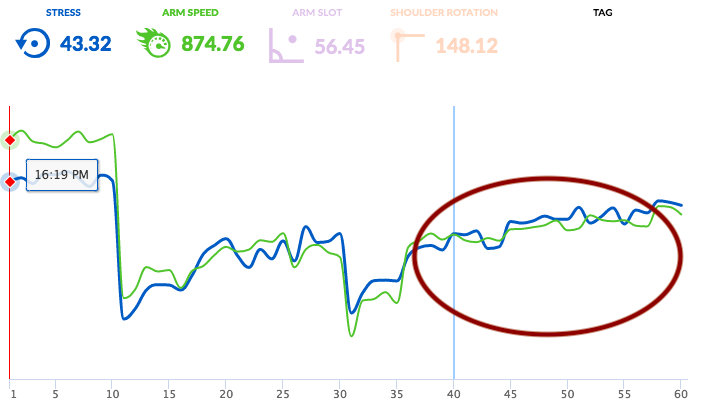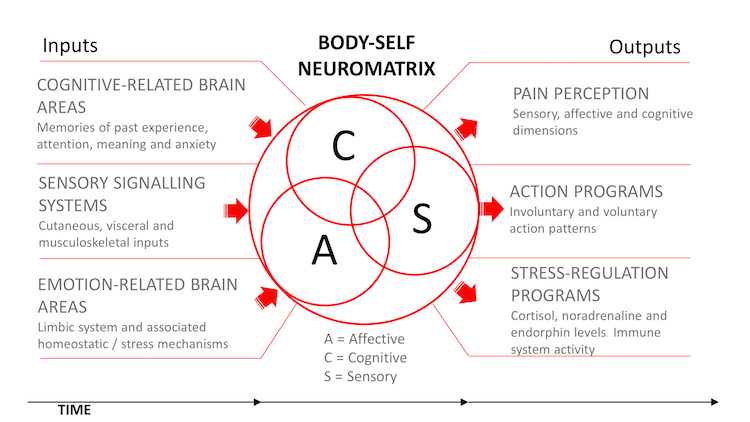The Softball Test: A Curious Pattern with UCL Pathology
The “Softball Test”
About five years ago, myself and my cousin began the transition from being PO’s in baseball to playing a position in the softball world. After both having pitched our whole lives, both having significant damage to our arms (SLAP tear for me, complete UCL tear for him), and wanting to make throws less than 250 feet, we decided it was time to try something different.
On our first attempt at long toss, an interesting thing occurred. While I struggled to keep the ball straight and throw without it feeling like my shoulder was going to fly out of it’s socket, my cousin could let it fly, full tilt, without any discomfort.
Prior to throwing, he had trouble fully extending his elbow, couldn’t throw a baseball over 150 feet without pain, but was now casually launching this softball 300+ feet like it was nothing. It was equal parts amusing, bewildering, and intriguing.
A Pattern Emerges
Since that time, I’ve been incorporating the ‘softball test’ (otherwise known as the DanO test) when an athlete presents with medial elbow discomfort that is also clinically suggestive of UCL pathology; unless there is significant swelling or pain.
The test – although I’m not too fond of calling it a test – simply asks the athlete to throw a baseball with enough intensity to elicit a low pain score (in the range of 3-4 /10 on the visual analogue score), take a short break and then repeat that intensity with a softball. More recently we’ve incorporated radar gun readings to ensure that intensity levels are within a reasonable bandwidth.
Anecdotally, and notwithstanding the exclusion of my recall biases, I’ve found what appears to be a pattern in which changing the implement from baseball to softball results in a non-painful state.
A Recent Case
Just recently, I decided to try the softball test out while also having the athlete wear a Motus sleeve. In doing so, I was hoping to capture similar stress readings between the softball and the baseball, and see how that related to pain scores.
*This particular athlete had a working diagnosis of a mild UCL sprain. No swelling, consistent pain with throwing a baseball at any intensity over ~40% and positive valgus testing.
After going through some Functional Range Release, isometrics, and stabilization exercises to both his shoulder and forearm, I had the athlete warm up to throw. They started throwing with a regular baseball, and built up to an intensity (5/10) which elicited a 2-3/10 discomfort.
We then introduced a 6 oz baseball and gave the same instructions – throw this ball at a 5/10 intensity. This is documented at throws 40-45. Subjectively, the player felt the same rating of discomfort a 2-3/10.
Throws 45-50 were then completed with a 6 oz softball. The athlete was instructed to throw with the same intensity as the previous 5 throws, and you can see that he may have overshoot that a bit (arm speed went up).
What was interesting to me, and like what we’ve found in the past, is that the player described having no pain at all.
We repeated the same working set, providing the same instructions, 5 throws with a baseball and 5 throws with a softball, and found the same pattern. Pain was around 2-3/10 for the baseball and 0 for the softball.

In the picture above, you can see two lines; the blue line is a measurement of Stress (indicator of torque on the elbow) and the second is Arm Speed (the speed of rotation). If you look at throws 40-60, you’ll see that both lines were slightly trending upwards as well as each set of softball throws generally having higher readings.
We know that the Motus data for stress is capturing information about the torque imposed on the area where the sensor is located. It cannot capture how that stress is ‘felt’ by individual structures, meaning that we have no way of knowing exactly how much stress is placed on the UCL.
This is interesting.
In the 20 throws that were made, the amount of stress placed on the area of the UCL was similar, if not greater for the softball throws, yet two different pain states were elicited.
Pain with a baseball.
No pain with a softball.
What can we make of this?
Since posting this picture on Twitter, I’ve had a few good conversations and theories come up to explain this finding. Let me preface the following by stating these do not need to be mutually exclusive.
The first is that throwing a larger ball will elicit greater co-contraction around the elbow joint and therefore decrease force ‘felt’ by the UCL.
We know that the flexor-pronator mass (FDS, FCU, FCR, and PT) are significant dynamic stabilizers to valgus stress on the elbow. These are all muscles that cross the elbow joint, and when contracted will shelter the UCL from stress.

The larger diameter of the softball may cause more activation of these muscles and thus provide more stabilization to the joint and less shearing on the ligament.
A second, and closely linked to the first, theory is that by altering the diameter of the softball you are making minute alterations the kinematics of the throw, leading to minor changes in motor recruitment. These slight changes may be enough to alter how the stress is placed on the surrounding structures. In other words, different kinematics = different stress.
A third point that was brought up is that the sensory changes / context of throwing could be different enough to turn off the pain alarm. Pain can be thought of as an output of the brain, an alarm system that is sounded when the brain perceives something as potentially dangerous. This perception, of course, is subject to change.

Adapted from Melzack’s Neuromatrix of Pain. Pain is an output state of our brain that is influenced by memories, meaning, sensory inputs, stress and a host of other factors. If we are in pain long enough, with enough meaning or emotion involved, we create strong neurological connections – called neurotags or neurosignatures – that are associated with the context under which the painful state began. For example, every time that a certain player visits Hoy Field, even years after he has finished playing baseball for the Cornell Big Red, he begins experiencing shoulder pain.
There are several potential explanations for why this alarm would’ve turned off; from a change in haptic perception of ball size to throwing a novel object. It is hard to do anything other than speculate on whether these played a significant component or not but there is the possibility.
How can we Practically use the Softball Test?
Right now, probably not that much until the idea is explored further. What I don’t want to happen is have players or parents ‘try this at home’ and immediately conclude that they do or do not have a UCL problem. If you are having pain while throwing, not just in the elbow but in any part of your body, please go and see a qualified healthcare practitioner with baseball experience.
It is fun, however, to get ahead of ourselves and think about the implications if this holds true. Here are some quick thoughts:
- I know that throwing a softball will alter kinematics, release point, and potentially mess how an athlete throws a baseball, but the idea of potentially off-loading the UCL while still being able to train components of the throwing motion would have value in the training process.
- Return to play implications. If we are able to find a means to complete a very similar task without pain, even if kinematics are changed slightly, there is value for rehabilitation. Throwing a softball without pain could be enough to alter the pain ‘neurotag’ associated with throwing a baseball, allowing for a new pain free state to emerge.
- Diagnostic implications. If this test can further help rule in or out UCL pathology, then there is significant value in it. (Again, let’s not get ahead of ourselves).
All in all, there may be something to this. It would be interesting to hear other people’s thoughts and experiences on the matter.
Let me know below!
Steve
*** Caveats ***
- This is obviously anecdotal evidence and not something that should be taken as scientifically validated. This post was simply an attempt to open a conversation for the community to discuss our findings.
- Please use your brain & common sense when deciding when to throw ANY object in acute traumatic cases. It shouldn’t have to be said, but if a player has acute swelling, heard or felt a snap, and has 8/10 pain, don’t throw a softball to see if it goes away. Get an image.
